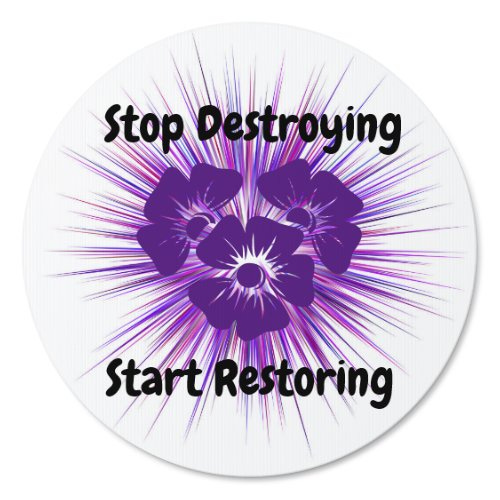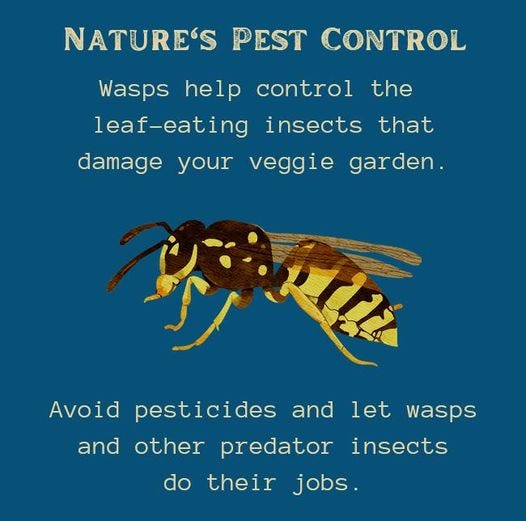Go Native!
Adding indigenous flowers, trees and shrubs not only helps preserve the natural diversity of plants and wildlife, but it also makes life easier for you.
In this newsletter, I want to emphasize the importance of adding native plants to our landscapes by replacing exotic plants and useless grass with beneficial flowers, trees, and shrubs. You may get tired of hearing this, but I will continue accentuating the need to GO NATIVE until my dying breath!
Another subject I will repeatedly harp on: Please stay away from the big retailers who sell imported plants, especially the ones that have been pre-treated with insecticides.
I hear the moaning and groaning from folks who prefer the big, showy, pest-resistant, colorful, unique plants purchased from the local big box store. They wonder, “What’s the big deal? A flower is a flower. They all have pollen and nectar for the bugs. So why does it matter where the plant came from?”
Well, it matters a lot because insects can be picky about what they eat and where they shelter. Mother Nature designed our world so that certain insects, birds, and wildlife evolved over the millennia in a symbiotic relationship with a diverse selection of plants, shrubs, bushes, and trees. When that balance falls out of whack, both flora and fauna suffer. Believe it or not, so does humanity. By planting native species, you will ensure both their future and ours.
Conservationists are trying to remedy this situation by encouraging everyone to stop destroying and start restoring our natural world. Creating shelter and food for insects is an essential first step.
Fact: Pollinator and other invertebrate populations are declining. Destruction of habitat, pesticides, disease, and climate change are all factors leading to the decline of many species. The International Union for Conservation of Nature (IUCN) estimates that roughly 600 species are endangered or critically endangered worldwide (IUCN Red List version 2016.1). In the United States alone, 99 insect species are currently (2023) listed as endangered or threatened by the Fish and Wildlife Service.
When you go native, you help support the local ecosystem. Indigenous plants are adapted to and thrive in the local climate, weather conditions, and soil types. In addition, the local flora provides food and shelter for insects, as well as birds and animals inhabiting the area.
Going native not only helps preserve the natural diversity of plants and wildlife, but it also makes life easier for you. Grass serves no ecological or environmental purpose. It just takes up space and demands a lot of time, effort, and money to maintain.
Just think. By replacing the grass in your yard with beneficial plants, all the mowing, weeding, watering, and fertilizing that monopolizes your summer weekends will become a distant memory. Native vegetation has a more extensive underground root system, so once established, they need little to no watering and, when closely spaced together, minimal weeding. The only fertilizing is an occasional bit of compost in the spring and a layer of leaves each autumn.
Just imagine all the curious bumblebees, flittering butterflies and moths, skittering beetles, buzzing bees and wasps, dragonflies, fireflies, and other bugs that will drop by to entertain you during the spring, summer, and fall. Birds and other critters looking for a tasty treat will patrol your yard, and if you’re lucky, you may see a bat or two!
Another advantage – goodbye to pesticides!
Bugs eat bugs, birds eat bugs, and even frogs eat bugs. Do you want to get rid of pests? Then plant a habitat containing a diverse selection of flowers, shrubs, and trees that’ll attract ladybugs to feast on those pesky aphids, dragonflies to catch mosquitoes, and all the other creatures who’ll munch on the bad guys. Mother Nature’s pest control may not be as fast-acting as a can of bug spray. However, they do get the job done without damaging the environment.
Insecticides are terrible stuff and should only be used as a last resort. Again, going back to those pre-treated plants I mentioned above – never, I mean never, let those things anywhere near your garden.
Those flowers are treated with a systemic insecticide that contaminates the soil and the plant. Yes, the chemicals effectively kill pests. But since the poison cannot discern the good guys from the bad, it also affects beneficial bugs. Any creature that feeds on the flower’s pollen, nectar, leaves, stem, or dwells underground near the plant is targeted.
It doesn’t stop there, either. Birds depend on caterpillars to feed their young. So when butterflies, moths, and their offspring are killed off, the birds are faced with the dilemma of having no food or unknowingly feeding their nestlings poisoned caterpillars.
Systemic insecticides are evil. They have been banned in other countries and in a few states here in the US. They should be outlawed everywhere.
And don’t forget the other pesticides. Herbicides, fungicides, and rodenticides are also equal opportunity killers and do as much (if not more) harm as good. Therefore, any chemical pesticide should only be used as a last resort.
It all boils down to this: Work with Mother Nature, not against her.
If you allow native plants to grow in your yard, you won’t need to wear yourself out cutting, fertilizing, and watering grass or take a chance at poisoning your family with pesticides.
The bugs will appreciate your kindness and reward you by pollinating your flowers and veggies and keeping the pests down. And don’t forget about the hours of relaxing entertainment they’ll provide flittering, fluttering, and buzzing around the beautiful world you created for them.
Happy Gardening, everyone!








I've known Greta for well over a decade, and it's true, she really does like getting her hands dirty!
Another idea is to plant drought resistant perennials in your gardens. You will not to need to waste water once they are established.